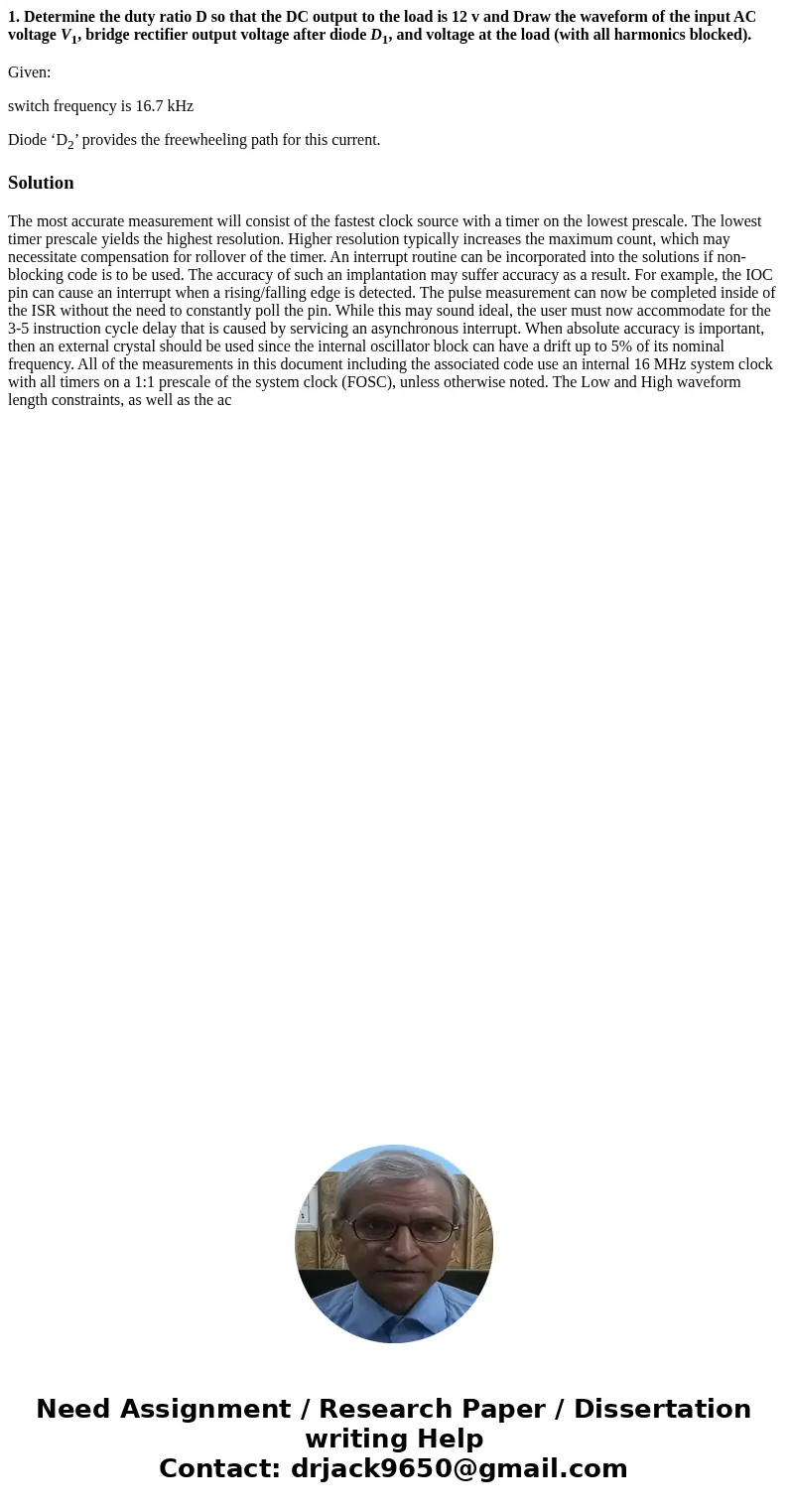1 Determine the duty ratio D so that the DC output to the lo
1. Determine the duty ratio D so that the DC output to the load is 12 v and Draw the waveform of the input AC voltage V1, bridge rectifier output voltage after diode D1, and voltage at the load (with all harmonics blocked).
Given:
switch frequency is 16.7 kHz
Diode ‘D2’ provides the freewheeling path for this current.
Solution
The most accurate measurement will consist of the fastest clock source with a timer on the lowest prescale. The lowest timer prescale yields the highest resolution. Higher resolution typically increases the maximum count, which may necessitate compensation for rollover of the timer. An interrupt routine can be incorporated into the solutions if non-blocking code is to be used. The accuracy of such an implantation may suffer accuracy as a result. For example, the IOC pin can cause an interrupt when a rising/falling edge is detected. The pulse measurement can now be completed inside of the ISR without the need to constantly poll the pin. While this may sound ideal, the user must now accommodate for the 3-5 instruction cycle delay that is caused by servicing an asynchronous interrupt. When absolute accuracy is important, then an external crystal should be used since the internal oscillator block can have a drift up to 5% of its nominal frequency. All of the measurements in this document including the associated code use an internal 16 MHz system clock with all timers on a 1:1 prescale of the system clock (FOSC), unless otherwise noted. The Low and High waveform length constraints, as well as the ac

 Homework Sourse
Homework Sourse